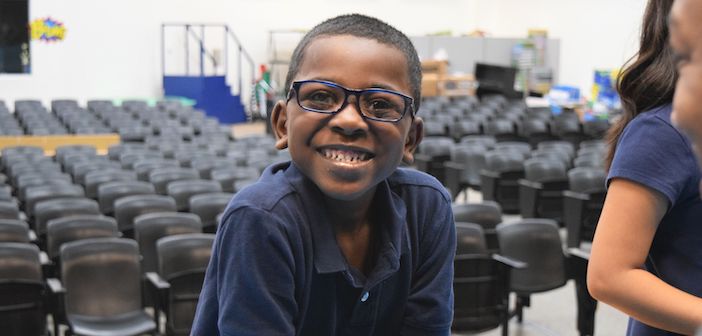“Oh wow! Colors are brighter, and I can see the words on the board! And I didn’t know things were supposed to look this clear!”
These were just a few of the enthusiastic comments echoed as nearly 60 Dallas ISD students at Jerry R. Junkins Elementary received new high-quality eyeglasses (at no cost to families).
Coinciding with World Sight Day – an annual day of awareness focusing global attention on blindness and vision impairment – eye care professionals with Essilor Vision Foundation were on hand to present and fit the children with their new eyeglasses. They also explained to the kids how important it is to wear them regularly and take care of them. Other schools will receive their glasses directly from Essilor Vision Foundation in the next several days.
This comes just a week after more than 350 students from Dallas ISD and other school districts received eye exams and, if needed, were fitted for eyeglasses at a vision event held at Essilor of America’s headquarters. Students got to pick from and try on dozens of trendy frames.
“As part of World Sight Day, Essilor Vision Foundation is delighted to bring clear vision to more than 350 students in need by providing vision exams and eyeglasses at no cost to their families,” said Becky Palm, President and Executive Director of Essilor Vision Foundation. “Vision impacts every aspect of a child’s life, from learning, confidence and social interaction to participation in activities such as sports, art and music. That is why we encourage parents to make their children’s vision a priority every day.”
Millions of children in the U.S. lack vision care and cannot see the world clearly. While some state laws require vision screenings, there is a large gap between the need for and access to vision care. The good news is a pair of glasses can help a child succeed in life!
Parents, here are some warning signs (some may surprise you!) that your child(ren) might need eyeglasses.
-
- Consistently sitting too close to the TV or holding a book too close
- Squinting
- Tilting the head to see better
- Frequently rubbing eyes, even when not sleepy
- Shielding eyes or other signs of sensitivity to light
- Excessive tearing and watery eyes
- Closing one eye to read, watch TV or see better
- Avoiding activities that require near vision, such as coloring or reading, or distance vision, such as playing ball or tag
- Complaining of headaches or tired eyes

